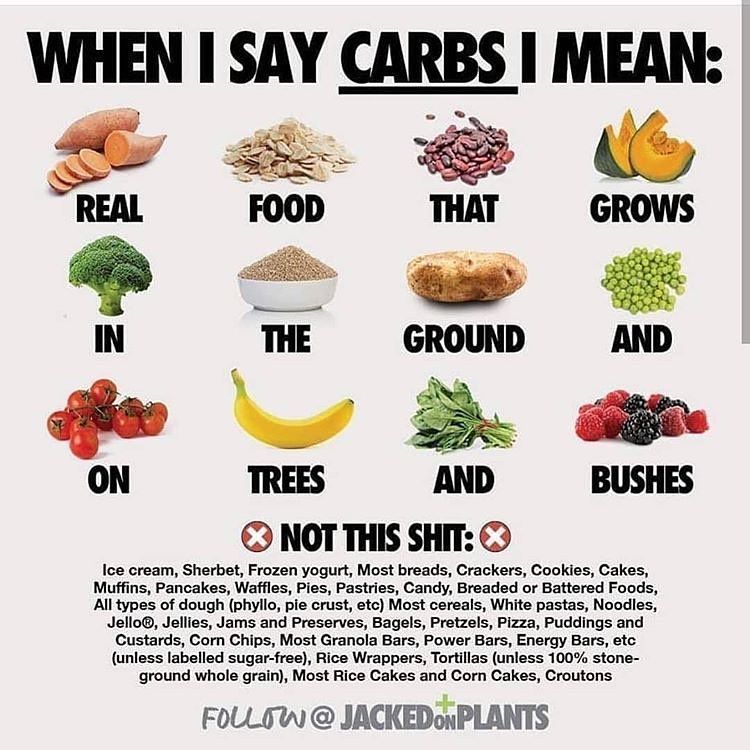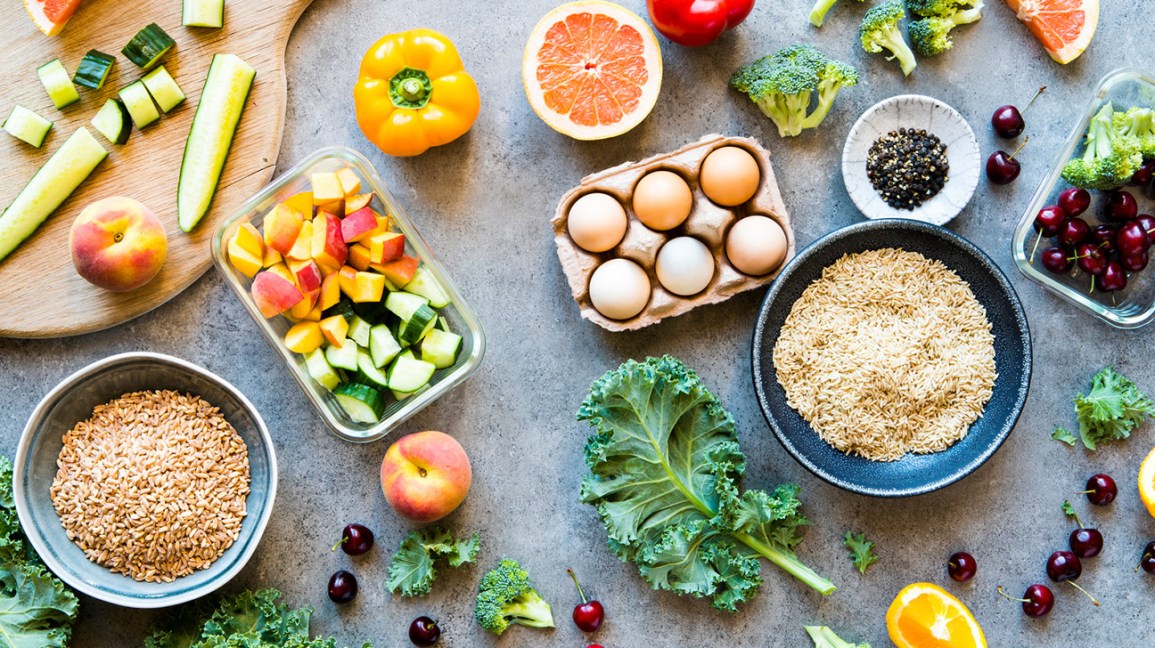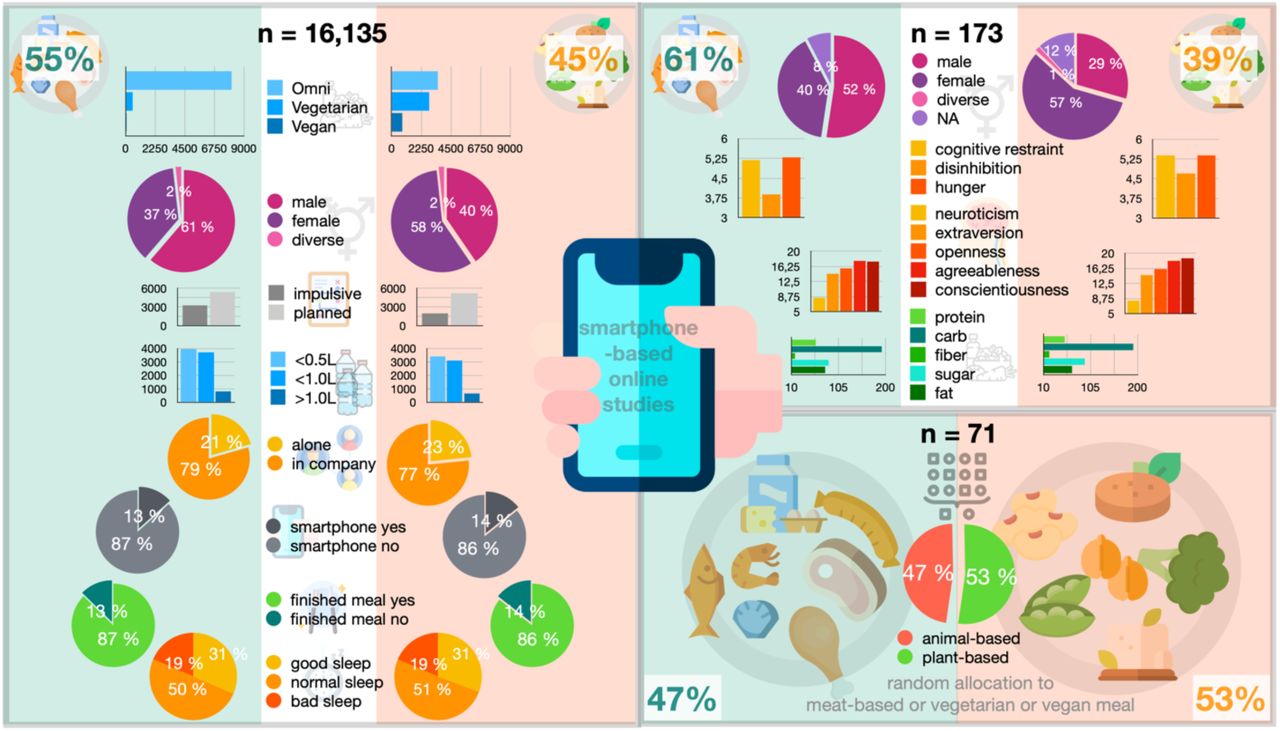
The DASH diet consists of 8 food items and 9 targeted nutrients. In a cross-sectional study, 264 men with nephrolithiasis were included. Based on urine analysis, the study evaluated urinary outcomes including hypocitraturia and hypercalciuria. Multivariable logistic regression was used by researchers to determine the relationship between DASH diet and urinary outcomes.
Plate for healthy eating
DASH encourages healthy eating and encourages the consumption of a wide range of fruits and vegetables. Your plate will have the highest nutritional value if you include a variety fruits and vegetables such as leafy greens, low fat dairy products, whole grain, fish, poultry, and nuts. DASH diet emphasizes fresh fruits, vegetables and limits salt intake.

Oral advice
The DASH diet, otherwise known as the Dietary Approaches to Stop Hypertension (DASH) diet, has been linked to better dental health. For twenty years, researchers monitored the dental health in 533 men aged between 47 and 90. At these dental exams, a trained examiner checked for signs of root cavities, which could lead to tooth loss. Those who followed the DASH diet experienced fewer dental problems and healthier teeth.
Written information
The DASH diet offers a comprehensive program to lower blood pressure. It has a variety nutrients that regulate blood pressure. It has less sodium and saturated oil than the American diet. There are some things you need to know before starting the DASH diet. Talk to your doctor about any medical conditions before you begin the diet. This is because DASH is intended to reduce high blood pressure. You should still consult with your doctor before you make any changes.
Measurement of plasma vitamin C levels
The researchers assessed vitamin C levels in serum of people on the DASH and UDA phases of the intervention. They also evaluated how active the participants were. Participants were told to keep their usual levels of physical activity. Fasting venous blood samples of participants were collected at baseline, two-days after the intervention started, and at the conclusion. They also measured the circulating levels of biomarkers of systemic inflammation, which indicate whether or not they are adhering to the DASH diet.
Modifications for participants' food preferences
The current study investigated the effects diet preferences have on food availability. It modified a standard questionnaire to determine the prevalence high-fat food items. This questionnaire was developed over two phases. The first phase required data to be collected on 48 different kinds of foods. The second phase consisted of a consumer survey to determine the participants' food preferences. These two phases provided data that were analysed to see if the initial structure of factors was strong.

Permanent lifestyle changes
Modified DASH diets combine a fast with a dietary intervention. The latter results in dramatic weight loss. This diet is not strictly as it seems, despite the name. Although it requires a change of lifestyle, this diet can reduce the risk for heart disease. This diet is low in glycemic, which helps to control blood glucose levels.
FAQ
How to measure bodyfat?
A Body Fat Analyzer is the best way to measure body weight. These devices measure the body fat percentage in people who wish to lose weight.
Why should we live a healthy existence?
Living a healthy lifestyle can help you live longer and more happy lives. Healthy eating habits, regular exercise, healthy sleep habits, stress management, and good sleep habits can help to prevent heart disease, stroke, diabetes, cancer, and other serious diseases.
By living a healthy lifestyle, we can improve our mental health. It will make us more resilient to everyday stress. A healthy lifestyle can also help you feel and look younger.
What are the ten best foods to eat in America?
The following are the 10 best foods to consume:
-
Avocados
-
Berries
-
Broccoli
-
Cauliflower
-
Eggs
-
Fish
-
Grains
-
Nuts
-
Oats
-
Salmon
What are 5 ways to live a healthy lifestyle?
Are there 5 ways to have a healthy lifestyle?
Living a healthy lifestyle involves eating right and exercising regularly. Healthy eating means avoiding sugary and processed foods. Exercise burns calories and strengthens the muscles. Getting enough sleep improves memory and concentration. Management of stress can help reduce anxiety levels and depression. Fun is key to staying young and vibrant.
What is the difference of a virus from a bacteria?
A virus, a microscopic organism that can not reproduce outside of its host cells, is called a virus. A bacterium, a single-celled organism, reproduces by splitting into two. Viruses have a very small size (approximately 20 nanometers), while bacteria can grow to a maximum of 1 micron.
Viruses can spread from contact with bodily fluids that are infected such as saliva, urine or semen. Bacteria are usually spread through direct contact with contaminated objects or surfaces.
Viral infections can be transmitted through skin cuts, scrapes and bites. They can also be transmitted through the eyes, nose, mouth, ears, vaginal, rectum, and anus.
Bacteria can be introduced to our bodies by cuts, scrapes or burns. They can also get into our bodies via food, water or soil.
Viruses and bacteria both cause illness. But viruses do not have the ability to multiply within their hosts. Infecting living cells is what causes them to become sick.
Bacteria can multiply within their hosts and cause illness. They can spread to other parts of our bodies. Antibiotics are needed to eliminate them.
Statistics
- nutrients.[17]X Research sourceWhole grains to try include: 100% whole wheat pasta and bread, brown rice, whole grain oats, farro, millet, quinoa, and barley. (wikihow.com)
- According to the Physical Activity Guidelines for Americans, we should strive for at least 150 minutes of moderate intensity activity each week (54Trusted Source Smoking, harmful use of drugs, and alcohol abuse can all seriously negatively affect your health. (healthline.com)
- WHO recommends reducing saturated fats to less than 10% of total energy intake; reducing trans-fats to less than 1% of total energy intake; and replacing both saturated fats and trans-fats to unsaturated fats. (who.int)
- The Dietary Guidelines for Americans recommend keeping added sugar intake below 10% of your daily calorie intake, while the World Health Organization recommends slashing added sugars to 5% or less of your daily calories for optimal health (59Trusted (healthline.com)
External Links
How To
What does the "vitamin") mean?
Vitamins are organic compounds naturally found in food. Vitamins are essential for our bodies to absorb nutrients from the foods we eat. Vitamins cannot be produced by the body. They must be obtained from food.
There are two types if vitamins: water soluble, and fat soluble. Water soluble vitamins dissolve easily in water. Vitamin C,B1(thiamine), B2 (2riboflavin), and B3 (3niacin), as well as vitamin C,B1, B2 (riboflavin), and B3 (niacin), vitamin B6 (pyridoxine), vitamin folic acid (biotin), pantothenic, and choline are examples. Fat-soluble vitamins are stored within the liver and in fatty tissue. These include vitamin D, E and K, as well as beta carotene.
Vitamins are classified based on their biological activity. There are eight main groups of vitamins.
-
A - Vital for healthy growth.
-
C - vital for nerve function and energy generation
-
D - Vital for healthy bones and teeth
-
E - Required for good vision, reproduction.
-
K - Required for healthy nerves and muscles.
-
P – vital for building strong bones.
-
Q - aids digestion and absorption of iron.
-
R is required for the production of red blood cells.
The recommended daily allowance (RDA) of vitamins varies depending on age, gender, and physical condition. The U.S. Food and Drug Administration sets RDA values.
For adults aged 19 or older, the RDA of vitamin A is 400mg per day. For fetal development, pregnant women require 600 micrograms per daily. Children ages 1-8 require 900 micrograms per day. For infants younger than one year, 700 micrograms are required daily. However, this number drops to 500 micrograms each day for children aged 9-12 months.
Children aged 1-18 require 800 micrograms of sugar per day, while those who weigh more than 1200 need 1000. For their nutritional needs, underweight children need 1200 mg per day.
Children aged 4-8 who have anemia are required to consume 2200 micrograms of Vitamin C daily.
2000 micrograms per person is necessary for general health. Because of their higher nutrient needs, women who are pregnant or nursing need 3000 mg per day.
Adults over 70 years of age need 1500 micrograms per day since they lose about 10% of their muscle mass each decade.
Women who are pregnant, nursing or breastfeeding need more than the RDA. Pregnant and breastfeeding women require 4000 micrograms each day during pregnancy and 2500 Micrograms each day after birth. Breastfeeding moms need 5000 micrograms per daily when breastmilk production occurs.